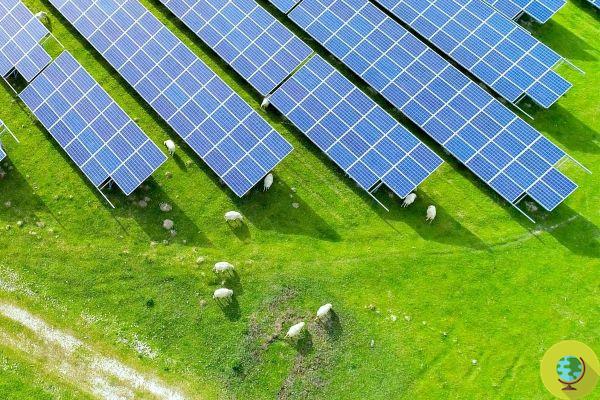
Solar parks can help save pollinating bees, thus having a double effect in favor of nature: in addition to being precious sources of renewable energy, they help protect biodiversity.
He is about to end up run over, his mother saves himSolar parks can help save pollinating bees, thus having a double effect in favor of nature: in addition to being precious sources of renewable energy, they help protect biodiversity.
THEsolar power it is increasingly within everyone's reach, with high-performance systems at competitive costs, which also allow small companies or individuals to install them with little expense. This has led the sector to exponential growth in recent years - and the trend is constantly increasing, also due to the climate crisis which is pushing many people towards greener energy solutions.
But this flourishing of sustainable energy corresponds to a rather unpleasant downside: photovoltaic systems and solar panels, in fact, need a lot of space. The US University of Priceton estimates that 9 million acres of land earmarked for solar panels are needed to achieve much-needed climate neutrality by 2050. This means thousands of acres stolen from nature, fields and flowers, with major consequences also for the life of animals.
In recent years, solar park administrators have been encouraged to turn the space under the solar panels into a habitat for bees, butterflies and other pollinating insects, guardians of biodiversity. In fact, if implemented with awareness, solar parks can do much more for the environment than simply produce clean energy: they can create biodiversity habitats that improve the soil, absorb carbon dioxide, improve the landscape and help the agriculture of neighboring areas. . Those who take advantage of the solar energy opportunity, on the other hand, would like to install solar panels quickly and inexpensively, without paying too much attention to what is underneath. Indeed, it often happens that the underlying soil is treated with chemical agents to stem the growth of weeds, with the result of destroying the richness of the soil.
Loss of habitat, use of pesticides and climate crisis have caused the most severe decline of all themes in bee, butterfly and pollinating insect populations - all in a couple of decades. Often we forget the precious contribution of these insects (considered annoying by many) to the agricultural economy, biodiversity and nature as a whole, and for this reason not enough is done to protect them.
Fortunately, the trend has been reversing for some years, and the first steps towards sustainable coexistence with bees are already visible. Solar parks are increasingly becoming a double benefit for the natural ecosystem and for us: pollinating insects are attracted to the wealth of flowers and plants placed under the solar panels, sheep serenely graze rye while the panels collect the sun's rays. and transform them into clean and sustainable energy. Furthermore, flowers and grass not only provide habitat and nourishment for pollinating insects and other animals, but with their dark colors and high humidity they keep the soil temperature lower than the bare earth and allow the solar panels to maintain themselves. fresher, improving their ability to generate energy. Finally, grazing the sheep keeps the area clean, naturally eliminates weeds and thus reduces the risk of fires.
Il Minnesota was the first US state to voluntarily adopt standards in solar parks that were also sustainable for pollinating insects (2016); other states soon followed, such as Vermont e South Carolina, up to California. Local initiatives are also worth mentioning - from small towns, university campuses and industries that choose to purchase energy from sources that support biodiversity and the life of pollinating insects.
Fonte: Oxford Academic
- We also recommend: World Bee Day, how it was born and why it is May 20th
- Pesticides are increasingly toxic and are killing bees, we need to save them NOW
- Bees: let's save them with a flower. Here are which ones to plant


























